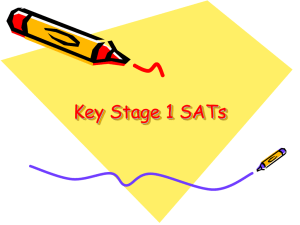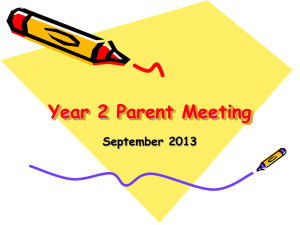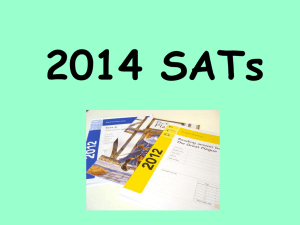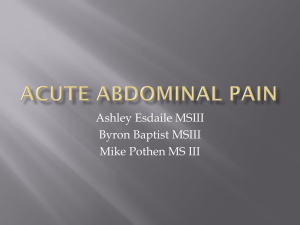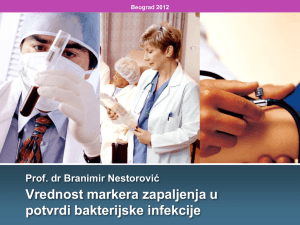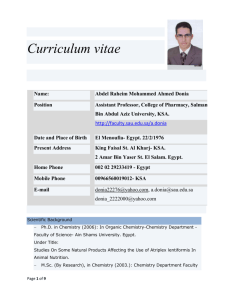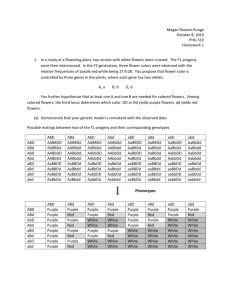Acute Abdomen
advertisement
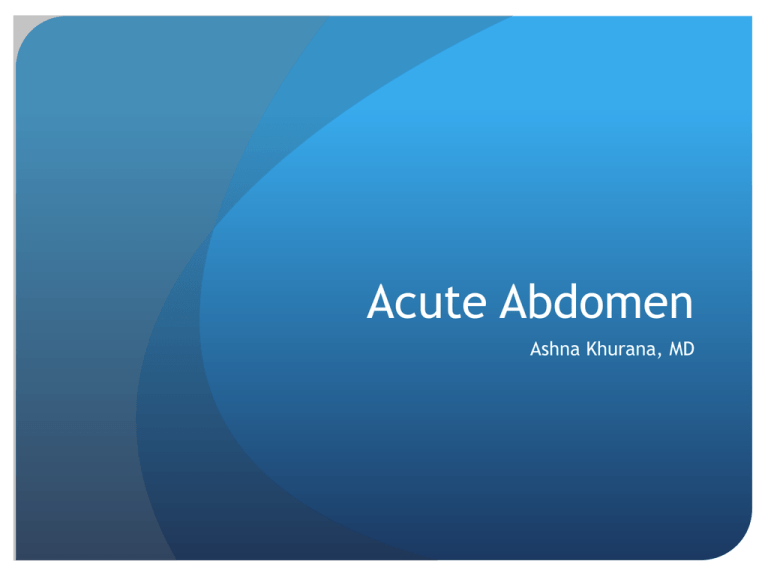
Acute Abdomen Ashna Khurana, MD Case 1 4 yo male with abdominal pain, n/v, poor appetite, and fevers to 102 x 2-3 days. Vitals: T102, HR 140s, BP 90/50, RR 22, sats 97% RA, 18kg Exam: ill appearing child, anxious, dry MM, tachycardic, distal pulses 2/2, cap refill 3 sec, fearful of abd exam but +bs, soft, ND, ?TTP in all quadrants, +guarding, GU exam normal. Limited U/S did not visualize appendix, some free fluid noted. WBC 13 with left shift, CPR 5.2, UA negative; running a NS bolus 20cc/kg ED calls for a consult. Wants to know if they should get a CT. What concerns you about this case? Case 1 4 yo male with abdominal pain, n/v, poor appetite, and fevers to 102 x 2-3 days. Vitals: T102, HR 140s, BP 90/50, RR 24, sats 97% RA, 18kg Exam: ill appearing child, anxious, dry MM, tachycardic, distal pulses 2/2, cap refill 3 sec, fearful of abd exam but +bs, soft, ND, ?TTP in all quadrants, +guarding, GU exam normal. Limited U/S did not visualize appendix, some free fluid noted. WBC 13 with left shift, CRP 5.2, UA negative; running a NS bolus 20cc/kg ED calls for a consult. Wants to know if they should get a CT. What do you think? Acute Appendicitis 2nd most common admission dx on the Peds Ward at Valley 3 most predictive clinical features: Pain in RLQ Abdominal wall rigidity Migration of periumbical pain to RLQ These signs are often absent in younger children 30-45% have atypical presentation Up to 60% perforation rate in children Other clinical signs to look for: Fever, Vomiting, Anorexia, +Rovsing/Obturator/Iliopsoas signs, difficulty ambulating Work up to Evaluate for Acute Appendicitis History and Physical Exam Labs to consider: CBC w diff, CRP, UA/U.cx, possibly an electrolyte panel Diagnostic Imaging: Start with Ultrasound: Limited U/S to look specifically at appendix vs. Complete Abdominal U/S CT Scan of Abd/Pelvis Consider Admission for Serial Abdominal Exams Consult Pediatric Surgery Pediatric Appendicitis Score (PAS) Uses Hx, PE, and lab results to categorize risk in children with abd pain on 10 point scale Anorexia Nausea or Vomiting Migration of Pain Fever > 38C Pain w/cough, hopping or percussion RLQ tenderness WBC > 10K Neutrophils/Bands >7.5K (Discuss score for Case 1) 1 1 1 1 2 2 1 1 PAS continued PAS < 2 Low risk • Discharge home with return precautions PAS 3-6 Indeterminate • Consider pediatric surgery consult, diagnostic imaging, and/or serial abd exams in the hospital PAS > 7 High Risk • Consult Pediatric Surgery • If U/S and dx inconclusive, strongly consider CT scan Management and Treatment Admit to Pediatrics Consult Pediatric/General Surgery NPO, IVFs Pain control Antibiotics Discuss Cefoxitin vs Zosyn Anticipate hospital course (non-ruptured vs. ruptured) Case 2 17 month old male infant brought to ED with inconsolable crying x 6 hours. Per mom, toddler has been well for past few days but no BM x 3 days. No fevers, no vomiting. Vitals: T 99, HR 130s, BP 80/50, RR 28, sats 97% RA, 11kg Exam: anxious toddler, crying in mom’s arms. Fearful of abd exam but +bs, soft, ND, ?TTP in all quadrants, +guarding; GU exam normal Limited Ultrasound did not visualize appendix. WBC 13, CRP 5.2, UA negative; Running a NS bolus 20cc/kg. ED calls for a consult. Wants to know if they should get a CT. What Concerns you about this case? Case 2 17 month old male infant brought to ED with inconsolable crying x 6 hours. Per mom, toddler has been well for past few days but no BM x 3 days. No fevers, no vomiting. Vitals: T 99, HR 130s, BP 80/50, RR 28, sats 97% RA, 11kg Exam: anxious toddler, crying in mom’s arms. Fearful of abd exam but +bs, soft, ND, ?TTP in all quadrants, +guarding; GU exam normal Limited Ultrasound did not visualize appendix. WBC 13 with left shift, CRP 5.2, UA negative; Running a NS bolus 20cc/kg. ED calls for a consult. Wants to know if they should get a CT. What do you think? Intussusception Invagination of a part of the intestine into itself, causing obstruciton Most common is ileocolic Typical Age – 2 months to 2 years old Characteristic pain that develops suddenly, is intermittent, severe, and classically accompained by inconsolable crying with drawing up of the legs toward the abdomen As obstruction progresses, may have bilious emesis Initial symptoms often confused with gastroenteritis Primary symptom may be lethargy or altered level of consciousness May have blood in stool or “currant jelly stools” Intussusception cont Almost 75% in children under 5 yo are considered idiopathic Up to 25% may have an underlying pathological lead point. Ex – Meckel diverticulum, polyp, small bowel lymphoma, duplication cyst, vascular malformation, inverted appendiceal stump, HSP… Diagnosis High index of suspicion On exam, may feel sausage shaped abdominal mass on right side of abd Labs? Not really helpful with diagnosis but often get CBC w/diff, CRP, Chem 7, UA/UCx during the work up Diagnostic Imaging: KUB – may show signs of intestinal obstruction (dilated loops of bowel w/absence of colonic gas) or other signs Ultrasound – method of choice Classic image is target sign – layers of the intestine within the intestine CT Scan may be helpful to identify a lead point Management Notify Radiology and Pediatric Surgery as soon as the diagnosis is made NPO Place a PIV and start IVFs. Assess severity of dehydration and bolus if needed. Enema reduction by Radiology. If unsuccessful, may need surgical reduction. Recurrence can occur in up to 10% of patients after successful non-operative reduction, so should be observed for 12-24 hours afterwards. Back to Case 2 Should you order a CT? Recall the ultrasound done was limited to the appendix/RLQ area only, so start with repeating the ultrasound to evaluate for intussusception. Case 3 4 year old male brought to ED with severe abdominal pain x 1 day. No n/v/d, no fevers, +poor appetite. Mom unsure of last BM. Vitals: T 99, HR 120, BP 90/50, RR 24, sats 97% RA, 18kg Exam: anxious appearing child, MMM, +tachycardic, cap refill 2 sec, fearful of abd exam but +bs, soft, ND, ?TTP in all quadrants, +voluntary guarding, GU exam normal. Limited Ultrasound did not visualize appendix. WBC 9, normal diff, CRP 1.2, UA negative; running a NS bolus 20cc/kg ED calls for a consult. Wants to know if they should get a CT. What concerns you about this case? Case 3 4 year old male brought to ED with severe abdominal pain x 1 day. No n/v/d, no fevers, +poor appetite. Mom unsure of last BM. Vitals: T 99, HR 120, BP 90/50, RR 24, sats 97% RA, 18kg Exam: anxious appearing child, MMM, +tachycardic, cap refill 2 sec, fearful of abd exam but +bs, soft, ND, ?TTP in all quadrants, +voluntary guarding, GU exam normal. Limited Ultrasound did not visualize appendix. WBC 9, normal diff, CRP 1.2, UA negative; running a NS bolus 20cc/kg ED calls for a consult. Wants to know if they should get a CT. What do you think? Constipation Discuss…

![Jiye Jin-2014[1].3.17](http://s2.studylib.net/store/data/005485437_1-38483f116d2f44a767f9ba4fa894c894-300x300.png)

